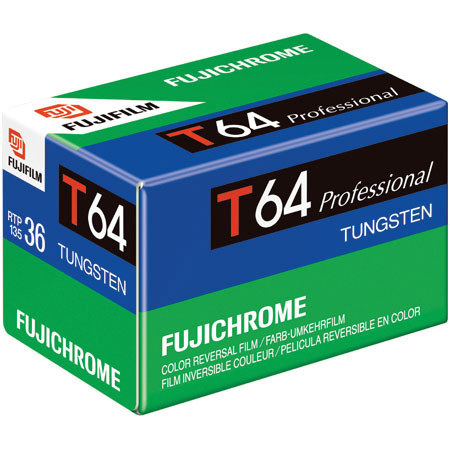
Overview
Compare
Q&A
Questions & Answers
Shopper : How much is processing?KEVIN C : was going to answer the question, but since your policy was that prices and references to other stores could not be provided, there was nothing I could say. For what it's worth, your store carries film mailers that can be used, though they are currently out of stock (<a href="http://www.adorama.com/FJSM36.html" target="_blank">http://www.adorama.com/FJSM36.html</a>). Dwaynes Photo in Parsons, Kansas does developing ($8.95 for 36 exposures), but you did not want references to other retailers (though the film mailers sold through Adorama are processed by Dwayne's (http://www.dwaynesphoto .com/)). I do like to support folks who shoot slide film and with developers becoming hard to find, you may want to revisit your policy on references to other retailers if Adorama doesn't stock developing mailers. Anyway, thought I'd pass this on since I have been an Adorama customer for a while now and want to support your business...LORI H : Denver digital imaging Center
303 698 2962GARY T : Greatly depends on where you take it to be processed. Each lab has different prices.Lynn K : The local store that processes E-6 slide film charges $11.50 to process and mount a 36-exposure roll. It's a few dollars cheaper if you choose to have them sleeved instead.DR. DAVID S : I use mail-order for developing... I believe it is about $12 to $15 per roll of 36 exposures including mounting. Hope this helps... Dave
Reviews about this item
Review Summary
About Fuji T64 Tungsten 35mm Color Slide Film, 36 Exposure
Never before have interiors or products been captured so grainlessly, in such impressive detail! New Fujichrome T64 Professional, an ISO 64 tungsten-type color transparency film has been reformulated to deliver ultrafine grain, optimum tonal scale and gradation balance under tungsten lighting. The incorporation of new-generation color couplers and new color correction technology ensures exceptionally accurate color reproduction, making this film ideally suited for a wide range of product shots, interiors, furniture, architecture, certain medical imaging needs, and other professional applications requiring tungsten lighting. New-generation color couplers also give this film excellent color image stability. Now easier to use, the new T64 Professional offers unsurpassed quality to meet the requirements of even the most demanding professional photographers.
FEATURES:
Smooth, natural gradation T64 Professional has been optimized to yield natural tones and continuous gray balance, for smooth, accurate reproduction of subtle gradation from highlights through shadows under delicate tungsten light.
Unprecedented color fidelity In addition to optimizing spectral sensitivity, Multi-Color-Correcting Layer technology, first commercialized in Fujichrome Velvia 100F and ASTIA 100F, achieves characteristics that closely mimic the spectral sensitivity of the human eye. Combined with new-generation color couplers, this gives new T64 Professional one of the world's highest levels of hue fidelity, including delicate colors beyond the reach of existing films, making this film most suitable for the stringent color reproduction demands of commercial photography and the photographing of paintings and other artwork.
Color image performance Incorporation of new-generation color couplers gives T64 Professional significantly improved color image stability and resistance to fading compared with previous color reversal films.
Ultrafine grain With the incorporation of Multi-Structured Sigma Crystal Technology, new T64 Professional achieves one of the highest levels of ultrafine grain with an RMS granularity of 7, giving it an impressive ability to express the delicate textures, dimensions and subtle gradations that are required to achieve professional results under tungsten lighting.
Superb push/pull processing suitability New T64 Professional exhibits minimum variation in color and gradation during push/pull processing over a range from -1. 2 to +1 stop, providing an expanded range of phototaking opportunities, as well as facilitating fine adjustments in exposure and density during processing.
